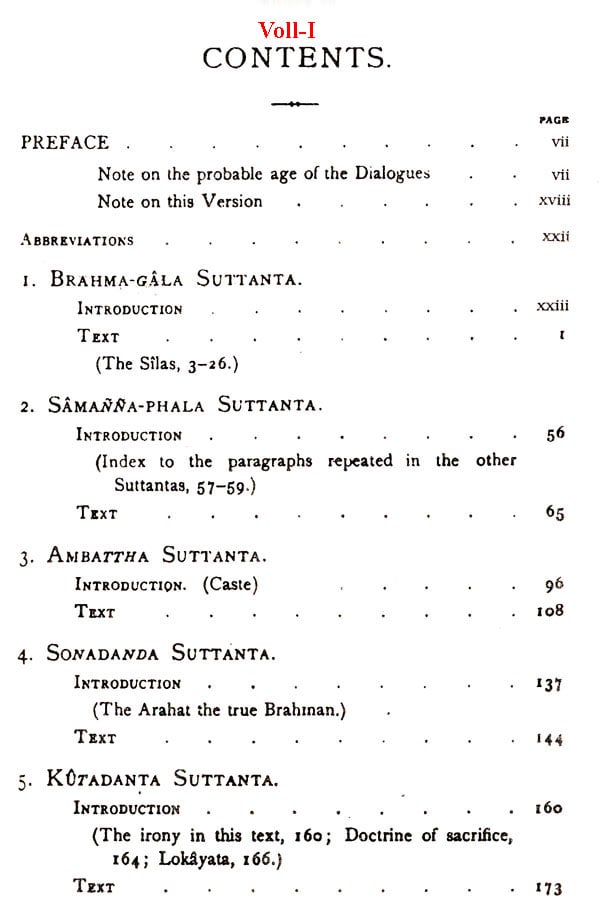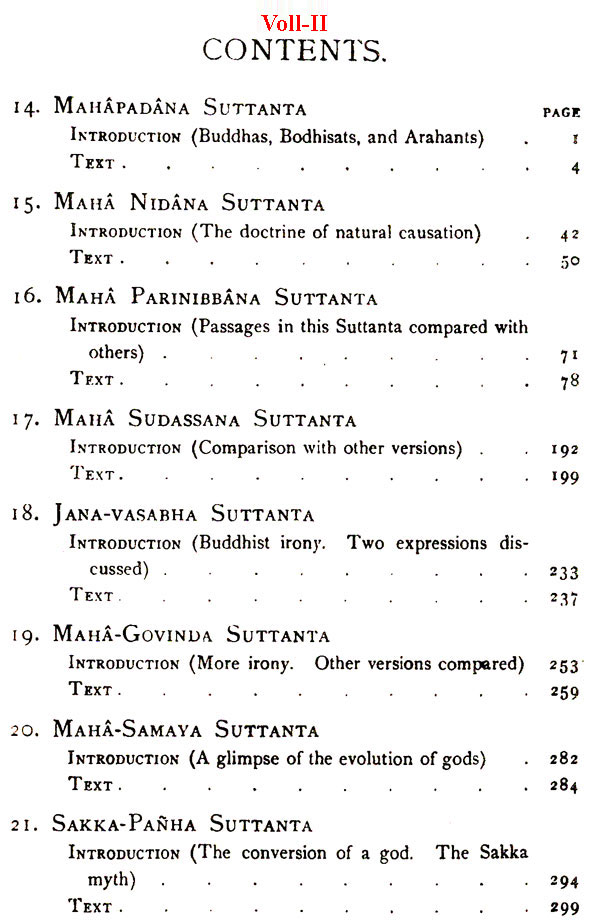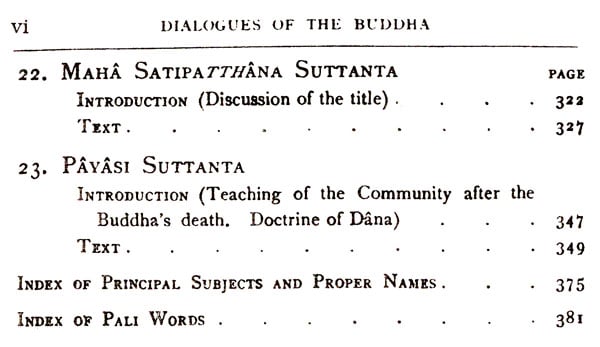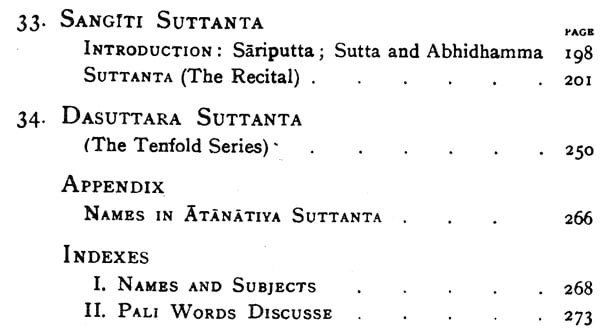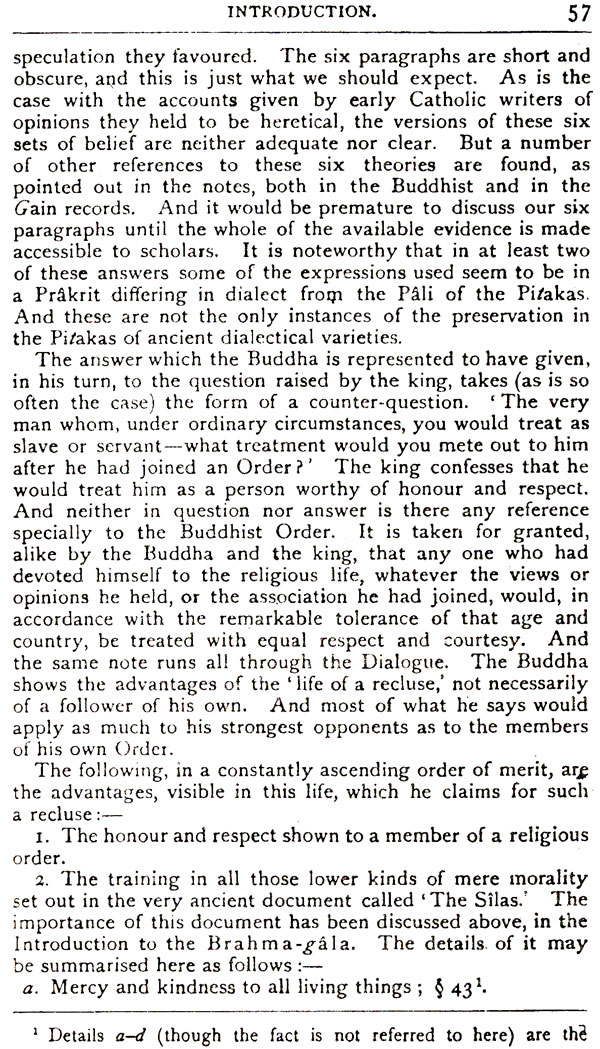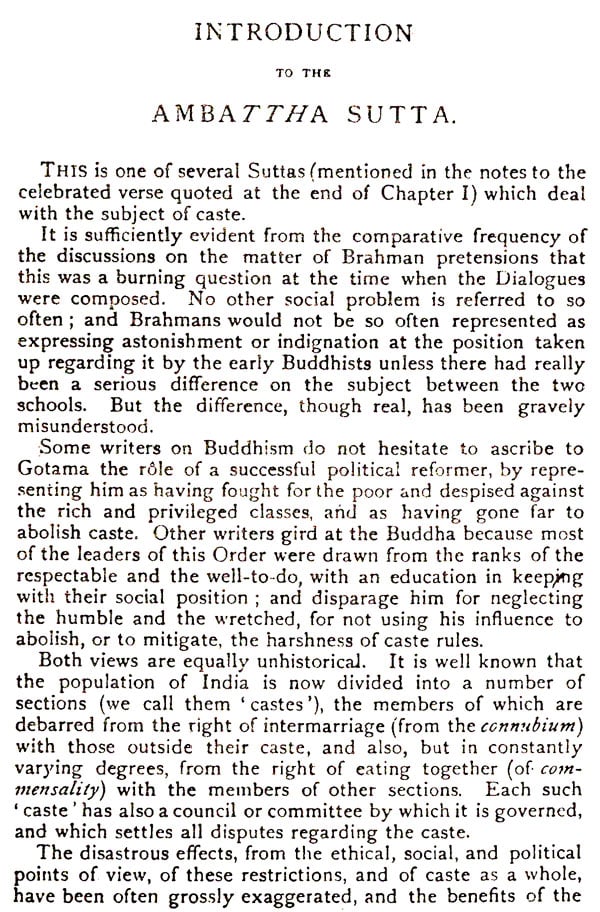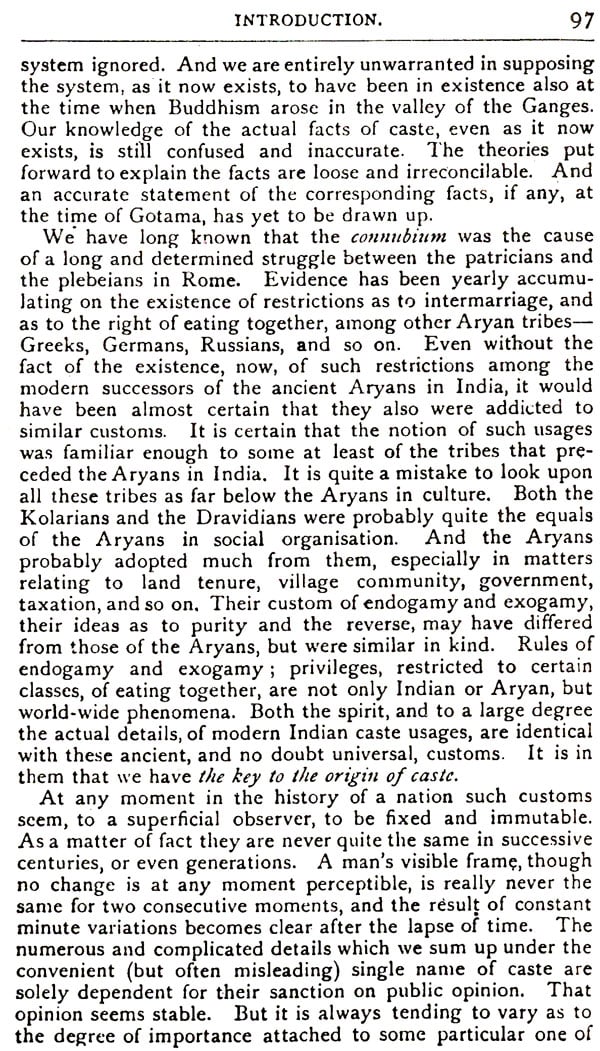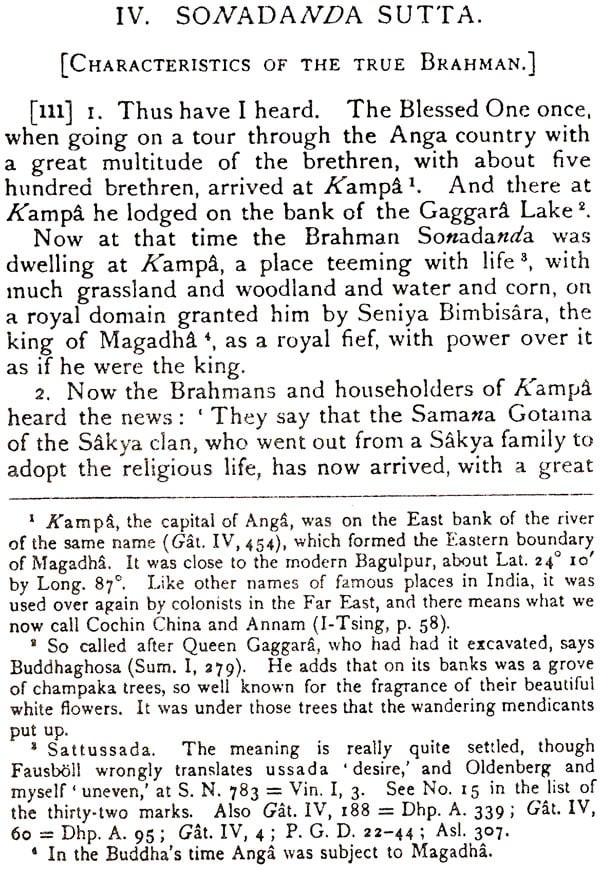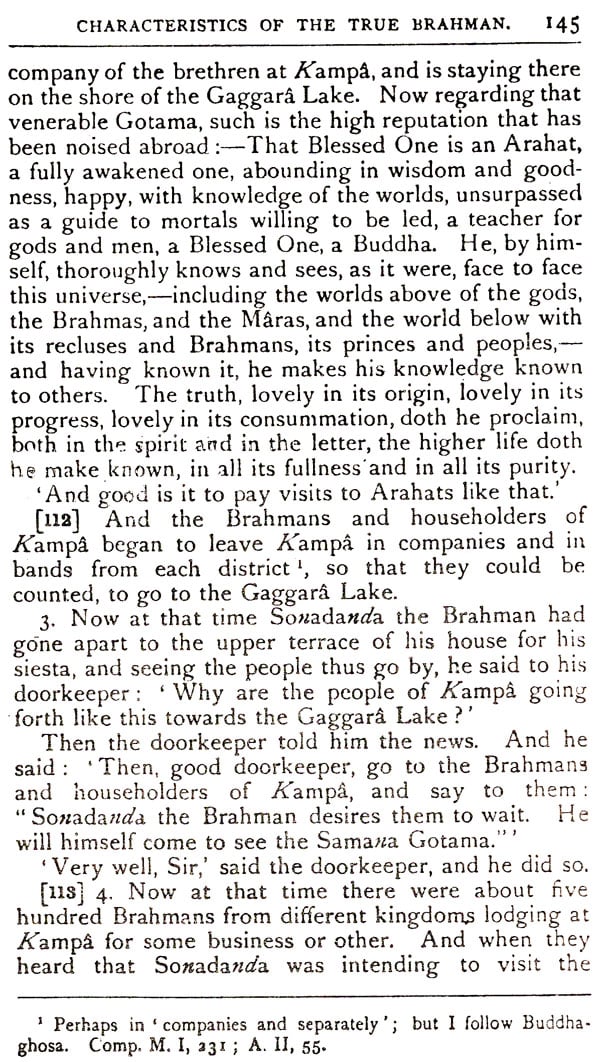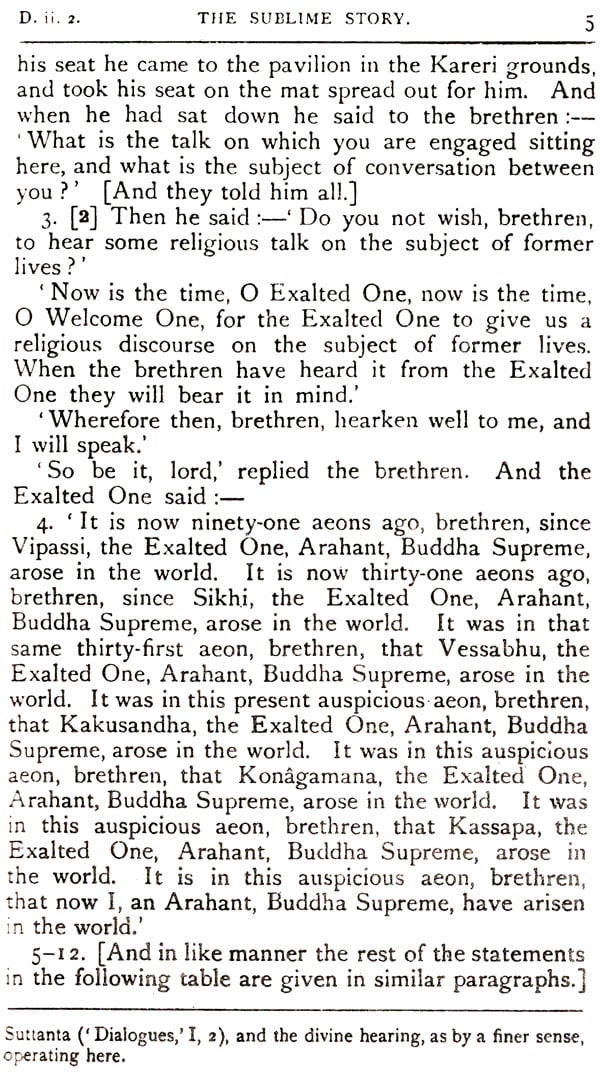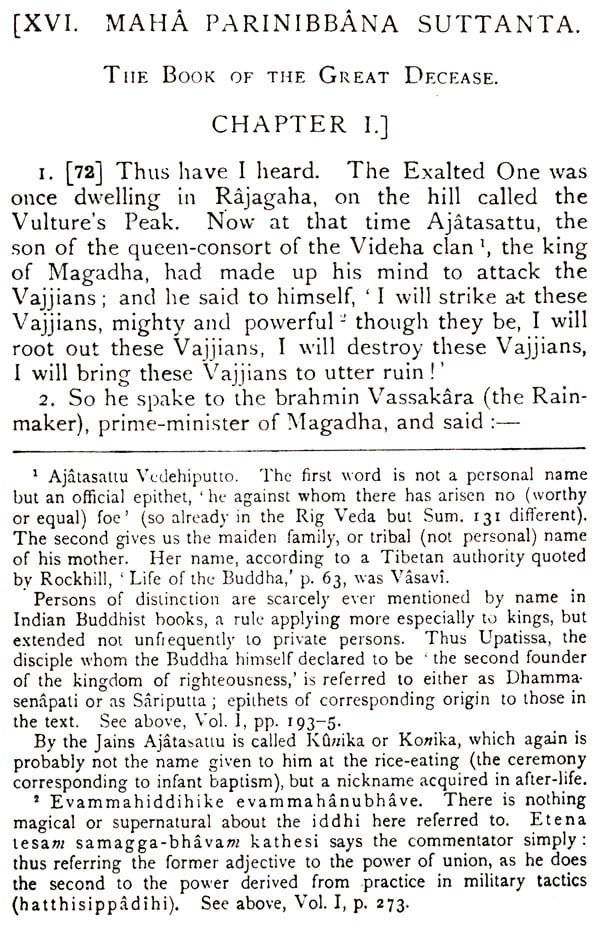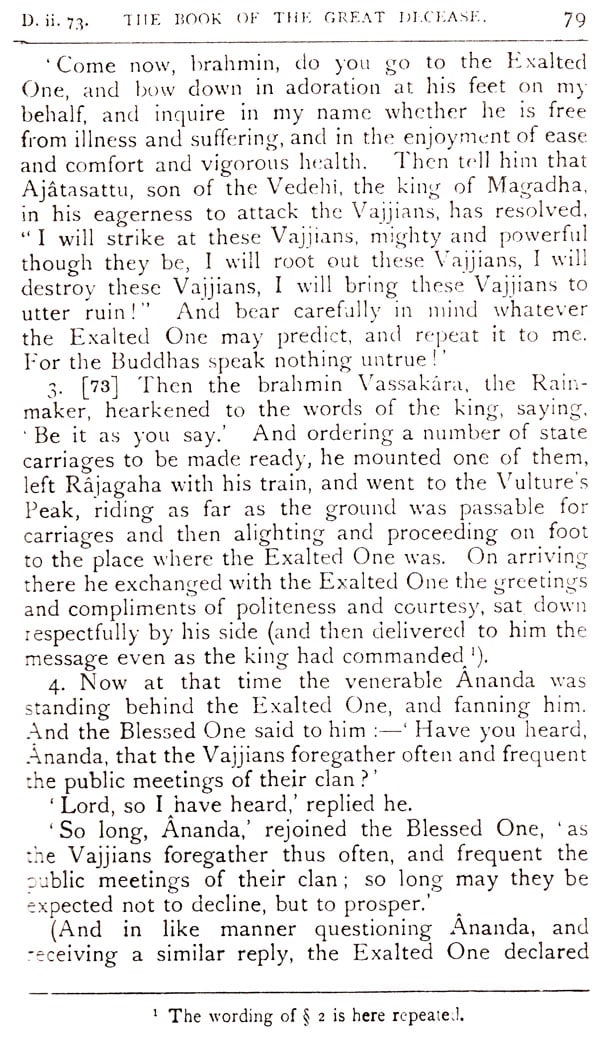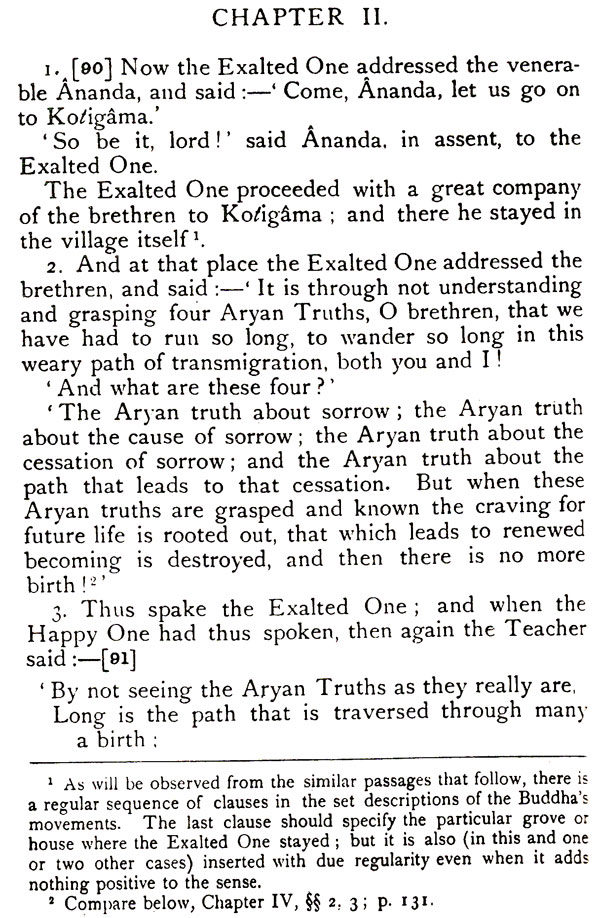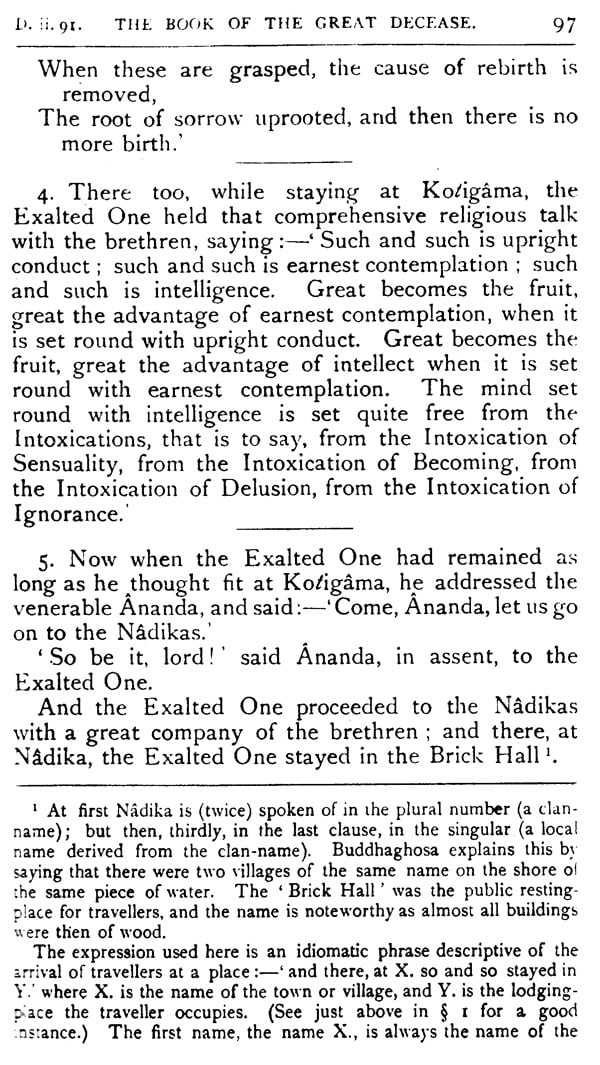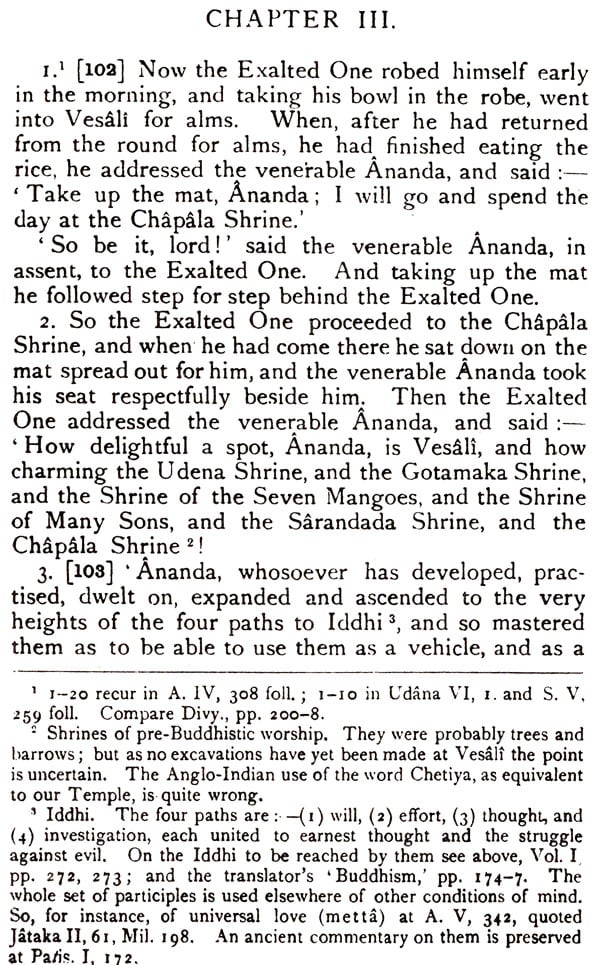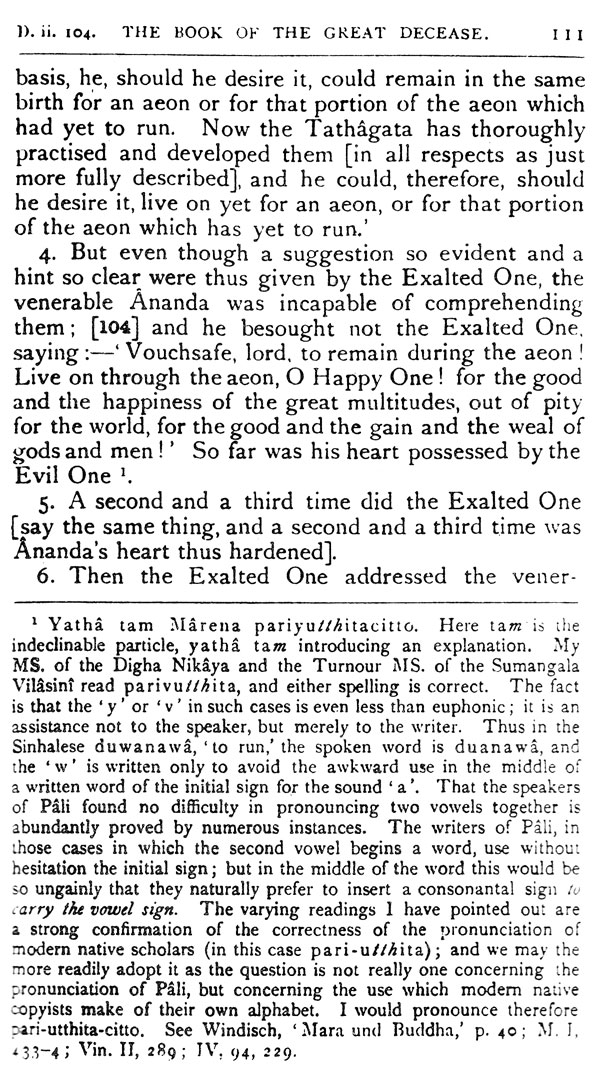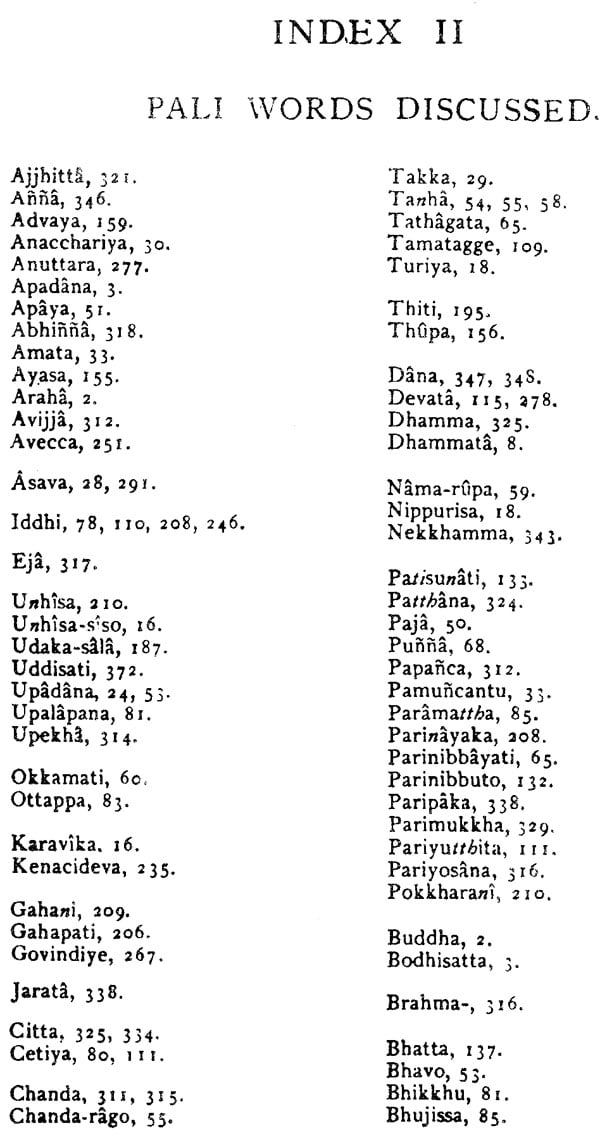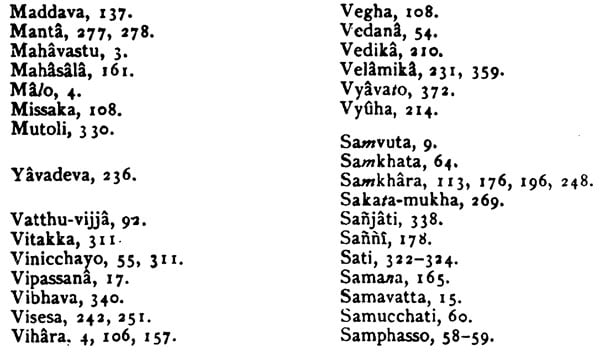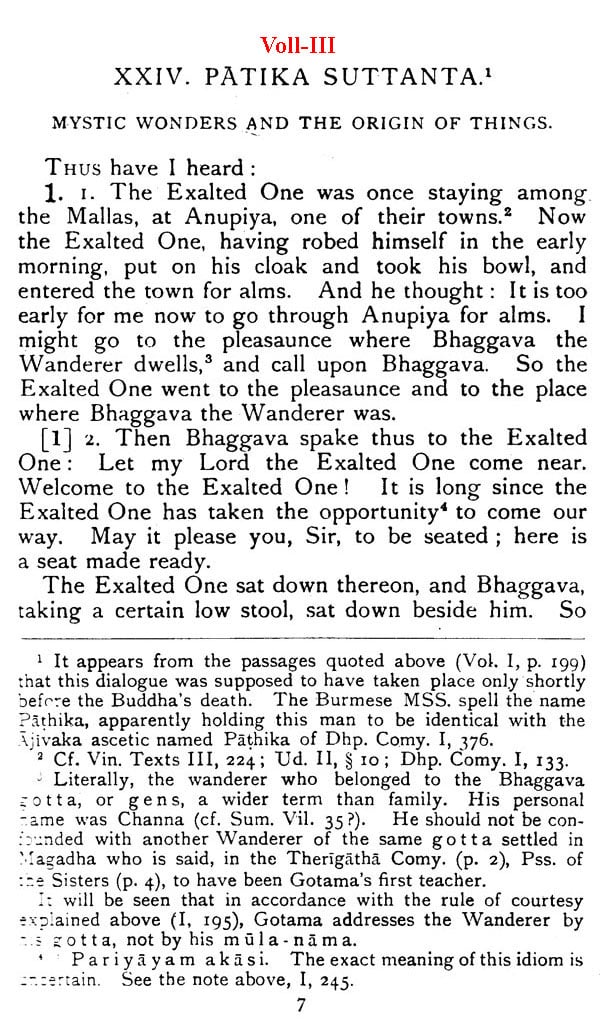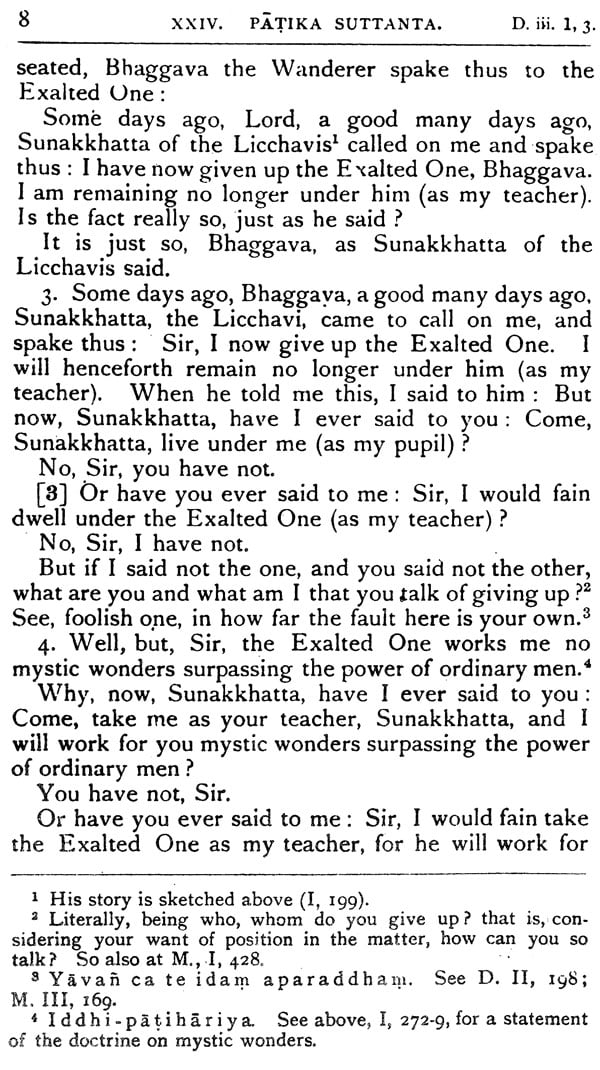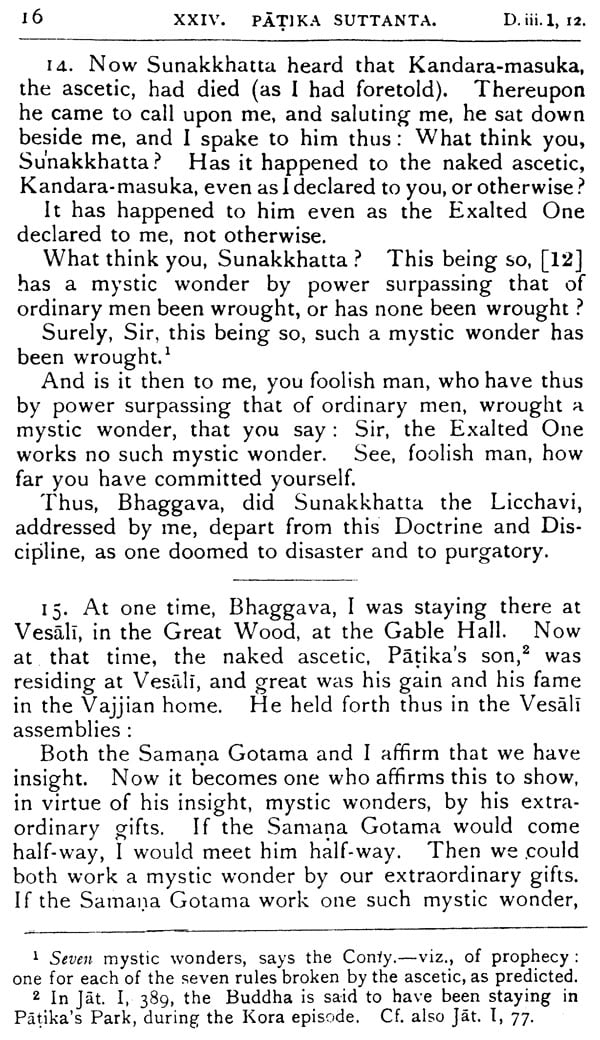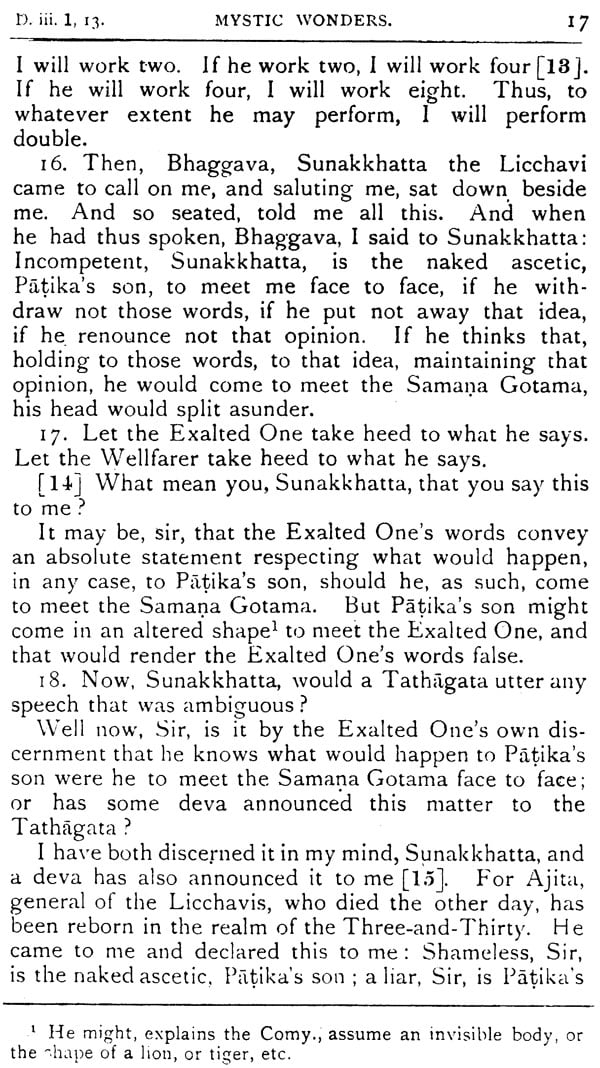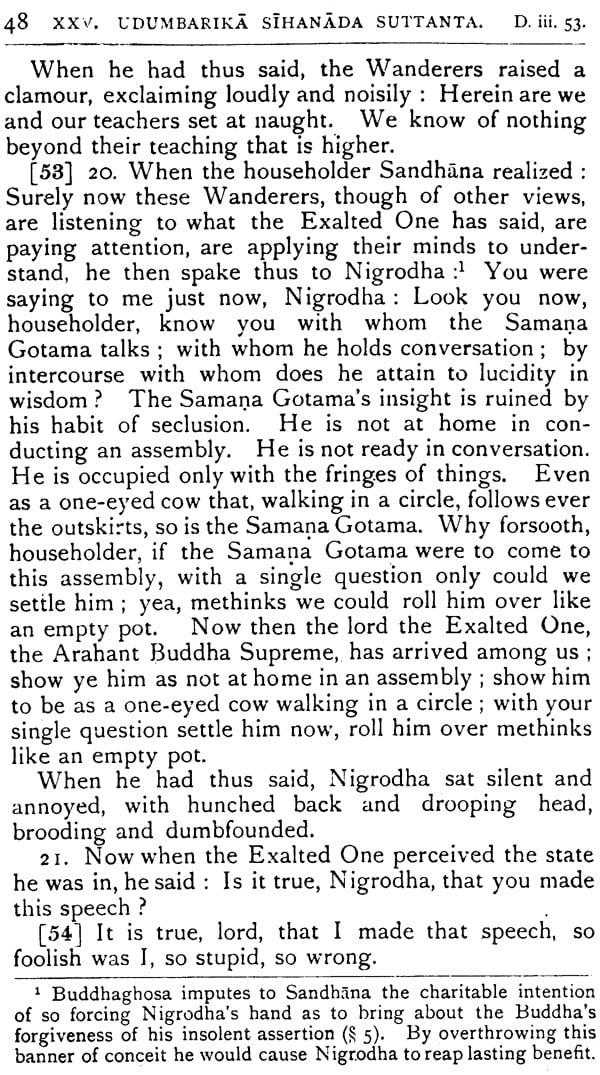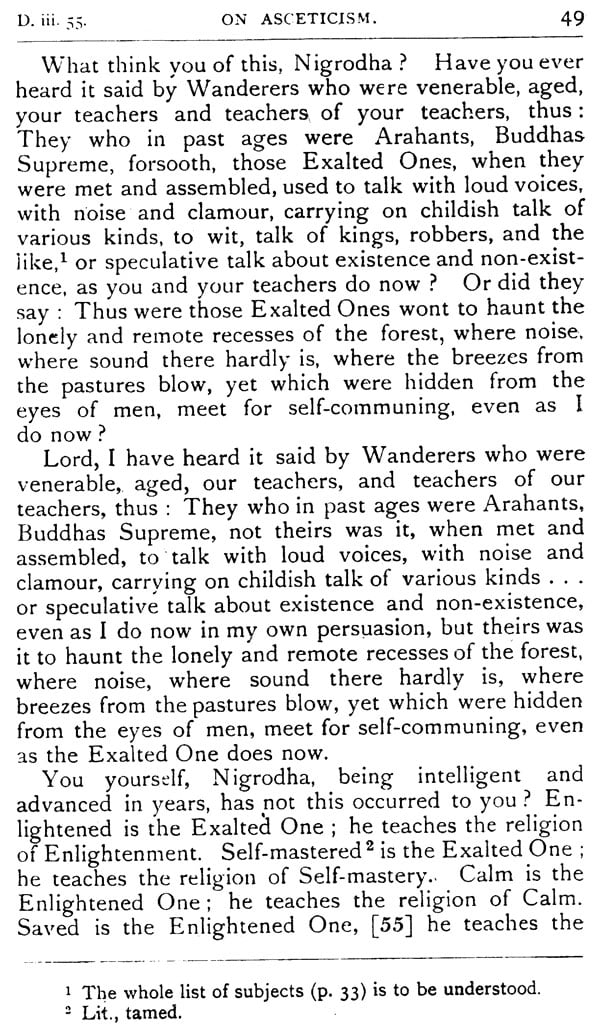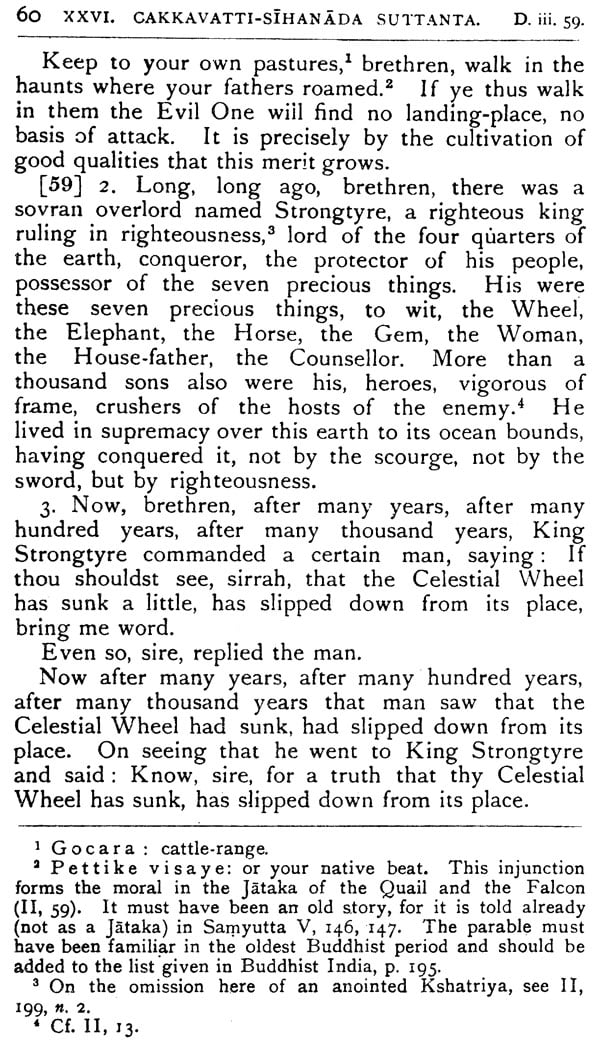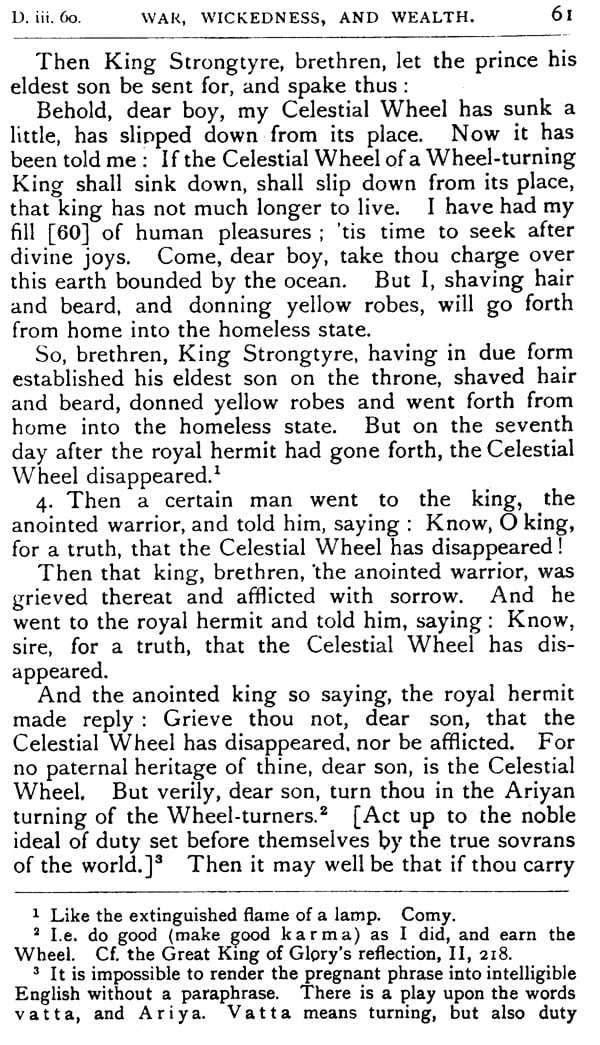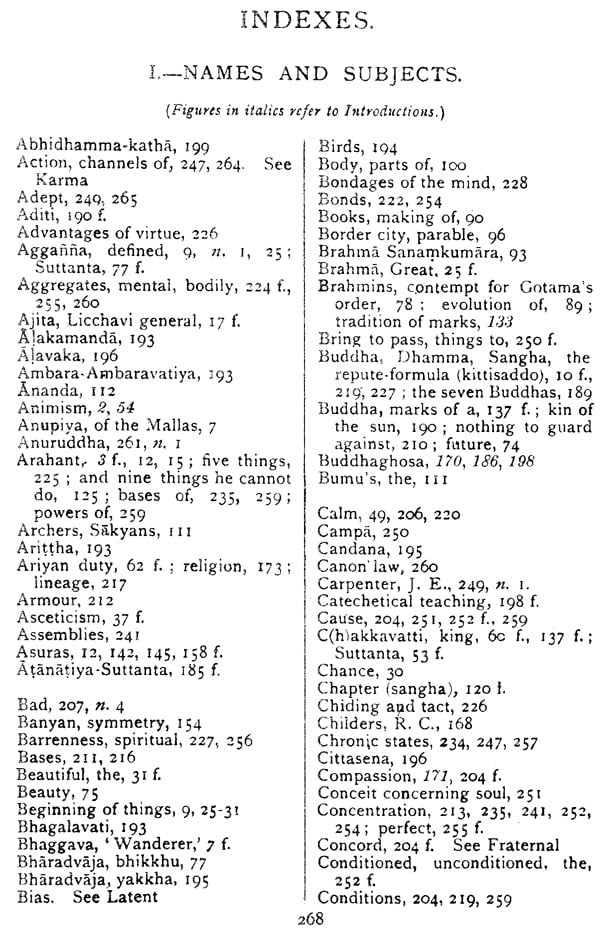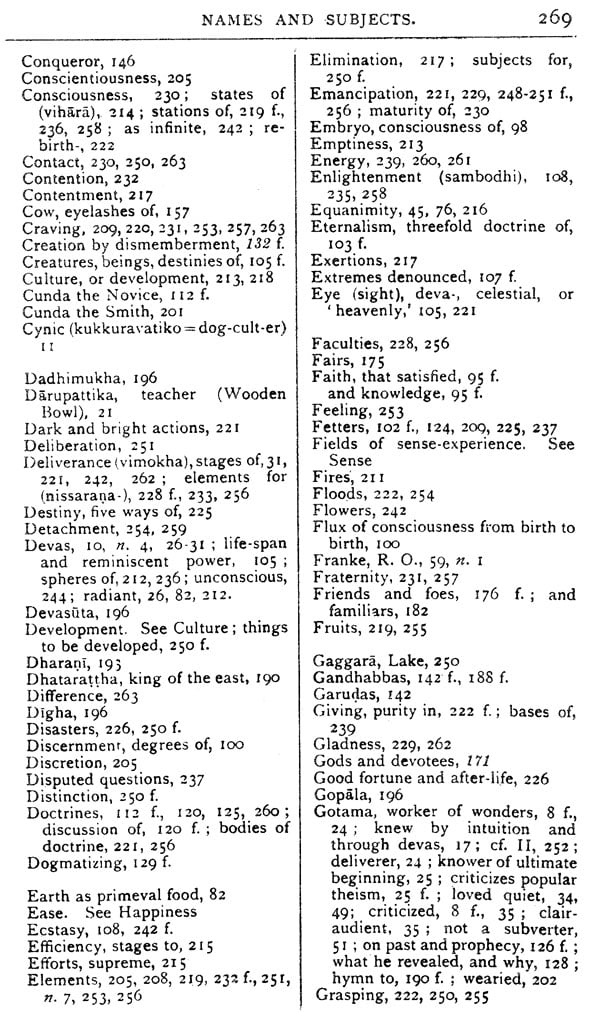
Dialogues of The Buddha –English Translation of Digha Nikaya (Set of 3 Volumes)
Book Specification
| Item Code: | NAQ911 |
| Author: | T.W.Rhys Davids, C.A.F. Rhys. Davids |
| Publisher: | MOTILAL BANARSIDASS PUBLISHERS PVT. LTD. |
| Language: | English |
| Edition: | 2016 |
| ISBN: | 9788120816688 |
| Pages: | 1051 |
| Cover: | HARDCOVER |
| Other Details | 9.30 X 6.00 inch |
| Weight | 1.86 kg |
Book Description
Voll-I
Note on the probable age of the dialogues.
THE Dialogues of the Buddha, constituting, in the Pali text, the Digha and Magghima Nikayas, contain a full exposition of what the early Buddhists considered the teaching of the Buddha to have been. Incidentally they contain a large number of references to the social, political, and religious condition of India at the time when they were put together. We do not know for certain what that time exactly was. But every day is adding to the number of facts on which an approximate estimate of the date may be based. And the ascertained facts are Already sufficient to give us a fair working hypothesis.
In the first place the numerous details and comparative tables given in the Introduction to my translation of the Milinda show without a doubt that practically the whole of the Pali Pitakas were known, and regarded as final authority, at the time and place when that work was composed. The geographical details given on pp. xliii, xliv tend to show that the work was composed in the extreme North-West of India. There are two Chinese works, translations of Indian books taken to China from the North of India, which contain, in different recensions, the introduction and the opening chapters of the Milinda For the reasons adduced (loco citato) it is evident that the work must have been composed at or about the time of the Christian era. Whether (as M. Sylvain Levy thinks) it is an enlarged work built up on the foundation of the Indian original of the Chinese books ; or whether (as I am inclined to think) that original is derived from our Milinda, there is still one conclusion that must he drawn-the Nikayas, nearly if not quite as we now have them in the Pali, were known at a very early date in the North of India.
Then again, the Katha Vatthu (according to the views prevalent, at the end of the fourth century A. D., at Kaiikipura in South India, and at Anuradhapura in Ceylon; and recorded, therefore, in their commentaries, by Dhammapala and Buddhaghosa) was composed, in the form in which we now have it, by Tissa, the son of Moggall, in the middle of the third century B. c., at the court of Asoka, at Pa/aliputta, the modern Patna, in the North of India.
It is a recognised rule of evidence in the courts of law that, if an entry be found in the books kept by a man in the ordinary course of his trade, which entry speaks against himself, then that entry is especially worthy of credence. Now at the time when they made this entry about Tissa's authorship of the Katha Vatthu the commentators believed, and it was an accepted tenet of those among whom they mixed-just as it was, mutatis mutandis, among the theologians in Europe, at the corresponding date in the history of their faith-that the whole of the canon was the word of the Buddha. They also held that it had been actually recited, at the Council of Ragagaha, immediately after his decease. It is, I venture to submit, absolutely impossible, under these circumstances, that the commentators can have invented this information about Tissa and the Katha Vatthu. They found it in the records on which their works are based. They dared not alter it. The best they could do was to try to explain it away. And this they did by a story, evidently legendary, attributing the first scheming out of the book to the Buddha. But they felt compelled to hand on, as they found it, the record of Tissa's authorship. And this deserves, on the ground that it is evidence against themselves, to have great weight attached to it.
The text of the Katha Vatthu now lies before us in a scholarly edition, prepared for the Pali Text Society by Mr. Arnold C. Taylor. It purports to be a refutation by Tissa of 25o erroneous opinions held by Buddhists belonging to schools of thought different from his own. We have, from other sources, a considerable number of data as regards the different schools of thought among Buddhists-often erroneously called ' the Eighteen Sects': We are beginning to know something about the historical development of Buddhism, and to be familiar with what sort of questions are likely to have arisen. We are beginning to know something of the growth of the language, of the different Pali styles. In all these respects the Kathy Vatthu fits in with what we should expect as possible, and probable, in the time of Asoka, and in the North of India.
To the Brahma-Gala Sutta.
THE phase of beliefs which this Suttanta is intended to meet, into which its argument fits, has been set out in some detail in the opening chapter of my American Lectures.' As there pointed out ', the discussion which thus opens this series of dialogues forms also the first question in the Katha Vatthu, and the first question in the Milinda. We cannot be far wrong if, in our endeavours to understand the real meaning of the original Buddhism, we attach as much weight to this question as did the author or authors of these ancient and authoritative Buddhist books.
The Suttanta sets out in sixty-two divisions. various speculations or theories in which the theorisers, going out always from various forms of the ancient view of a ‘soul'-a sort of subtle manikin inside the body but separate from it, and continuing, after it leaves the body, as a separate entity-attempt to reconstruct the past, or to arrange the future. All such speculation is condemned. And necessarily so, since the Buddhist philosophy is put together without this ancient idea of soul.'
The Buddhist scheme endeavours, in other words, to include all the truth which previous thinkers had grafted on to the old savage theories of a semi-material, subtle, permanent entity inside the body, while rejecting those theories them .elves it endeavours to retain all the philosophic truth which previous thinkers had grafted on to the theosophies-the corollaries of the soul theories-while rejecting those theosophies themselves. The reasons given for this position are threefold firstly, that such speculators about ultimate things, either in the past or the future, have insufficient evidence. see only one side of the shield ; secondly, that such speculations do not lead to emancipation, to Arahatship ; and thirdly, that such theories are really derived from the hopes, the feelings, and the sensations arising from evanescent phenomena'-they belong, in other words, to the realm of hastily formed, empirical opinion (d i tthi), not to that of the higher wisdom (panna). So that Buddhism, in the first place, holds a position somewhat similar to the modern Agnostic position. Secondly, while acknowledging the importance of feeling and of intellect, it lays special stress upon the regulation, the cultivation, of the will. And thirdly, it distinguishes between a lower and a higher wisdom.
Several scholars, and especially-with more knowledge and detail-Dr. Karl Neumann, have maintained that the position of Buddhism in the history of Indian philosophy is analogous to that of Schopenhauer in European philosophy. On the other hand, it is maintained by Professor Deussen that Schopenhauer's position is analogous to that of the Upanishads. The reconciliation will probably be found to be that what Buddhism took over, with more or less of modification, from the Upanishads, is about the some as that part of the Upanishad doctrine which is found, in European phraseology, in Schopenhauer ; and what Buddhism rejected altogether is not to be found in Schopenhauer. He himself, who however knew both systems only from second-hand and inaccurate authorities, says, If I am to take the results of my own philosophy as the standard of truth, I should be obliged to concede to Buddhism the pre-eminence over other (systems of philosophy).'
Does one but hold on long enough in this span of human way-faring, one may be here to see even the translation of a Buddhist text sold out, with the gentle demand for it not yet exhausted. So has this work, after 28 years, attained to a second edition. By the process called ' off-set ', emendations are difficult and costly. And there are no funds. Hence I have made only such as were most desirable, leaving in much which I should have wished to see expressed otherwise, both in my husband's work and in my own, were this more thoroughly a ' new ' edition.
A word first to make clear our partnership in both this and the third (and last) volume, the first being wholly his work (published 1899). He ceased from his labours here in 1922, soon after the completion of these Dialogues. From the beginning of this century he had undertaken engrossing work as holding the new, the first Chair in a British University for the comparative study of religion, a task, at the present stage of research, fitter for half a dozen men than for one. Concentration on work in any one religious tradition had become impossible. It was only when Estlin Carpenter suggested that I should join in aiding the completion of the Dialogues that we both with good will started to do this. Of this second volume Rh. D. had already, in 1881, published Suttantas XVI and XVII in Sacred Books of Me East, Xl. All the rest I translated, he revising my work, inserting many of the footnotes and contributing all the Introductions save that-to the Maha-Nidana Suttanta, which is my work.
Another eleven years passed before the remaining volume was issued. Funds had to be raised, and our generous patron no longer sat on Siam's throne. My husband was ageing, his health waning, and the accursed war came down. Siam's later monarch however, paid the printer, and the Dialogues achieved completion in 1921. Introductions to XXXI-XXXIII I wrote and all the translation.
In this edition it is mainly my own work that I have revised. Not a little in my partner's work needed revision, but there was not only expense, but the wish in me not to barge in on what was in a way a ' classic '. Moreover his footnotes, where a rendering seemed to him make-shift, often guard the reader. Is all this there is matter in the history of research it may be well to keep in view.
Here I will briefly notice certain prominent renderings I have left unaltered, and also three of vital importance which I have altered.
WE find in this tract the root of that Birana-weed which, growing up along with the rest of Buddhism, went on spreading no luxuriantly that it gradually covered up much that was of value in the earlier teaching, and finally led to the down-fall, in its home in India, of the ancient faith. The doctrine of the Bodhisatta, of the Wisdom-Being, drove out the doctrine of the Aryan Path. A gorgeous hierarchy of mythological wonder-workers filled men's minds, and the older system of self-training and self-control became forgotten.
Even at its first appearance here the weed is not attractive. The craving for edification is more manifest in it than the desire for truth. We have legends of six forerunners of the historical Buddha, each constructed with wearisome iteration, in imitation of the then accepted beliefs as to the life of Gotama. So exactly do these site legends follow one pattern that it has been possible, without the omission of any detail, to arrange them in parallel columns.
The main motive of this parallelism is revealed in the constantly repeated refrain A yam etth a dhammata That, in such a case, is the rule,' the Norm, the natural order of things, according to the reign of law in the moral and physical world. Precisely the same idea is emphasized in the doctrine of dependent origination, the Pa ticca -samuppada, placed here in the mouth of Vipassi, the most ancient of these six teachers of old. The fact that it is to placed shows that the early Buddhists, when our Suttanta was composed, believed this doctrine to have been pre-Buddhistic.
It is probable that all the great religious teachers of antiquity appealed, in support of their views, to the wise men of still older times. It is to recorded of most of them ; and where it is not recorded, as in the cases of Lao Tsu and Zarathustra, that is probably due to the meagreness of the extant records. In every country where the level of intelligence was sufficient to produce a great leader of men in matters of religion, it was sufficient also to bear in remembrance the names at least, and a vague notion as to some of the doctrines, of former, if perhaps less successful and famous, reformers.
But a Wisdom-Being, appearing from aeon to aeon under similar circumstances to propound a similar faith, This is an exclusively Indian conception ; in Indian literature it is mainly Buddhist ; and in Buddhist literature its first appearance is in documents of the date of our Suttanta. Did the Buddha himself know anything of this theory ? Possibly not. The theory of a number of successive Buddhas presupposes the conception of a Buddha as a different and more exalted personage than an Arahant. Now in our oldest documents these two conceptions arc still in a Bate of fusion. The word Buddha does not occur in its later, special, technical sense. It occurs often enough in ambiguous phrases, where it may be translated by 'Converted One, Awakened One.' Thus at Sutta Nipata 48 it is said, of Gotama, The Awakened One (Buddho) came to 113jagaha ' ; but the time referred to is some years before he had become a Buddha in the later technical sense. And at Sutta Nipata )67 it is said : Let us ask Gotama, the awakened one who has passed beyond anger and fear' ; but the very same adjectives are used at Itivuttaka, No. 68, of any ordinary Arahant. So the phrases used to describe the mental crises in Gotama's career are invariably precisely the same as those used under similar circumstances of his disciples; and this holds good both of his going forth, and of his victory and attainment of Nirvana under the Tree of Wisdom. Further than that, in long descriptions of Gotama-such for instance as that in Sutta Nipata, verses 153 to 167-all the epithets used arc found elsewhere applied to one or other of his disciples. The teacher never called himself a Buddha (as distinct from an Arahant). When addressed as Buddha, or spoken of as such, by his followers, it is always doubtful whether anything more is meant than an enlightened Arahant.
THIS Suttanta is concerned really with only two topics, firstly that of mystic wonders, and secondly that of the origin of things. The former has been dealt with much better and more fully in the Kevaddha ; the latter, here treated quite curtly and by way of appendix only, is fully discussed below in the Agganna.
The treatment here is clumsy. It is no doubt intended to be both humorous and edifying. But the humour is far removed from the delicate irony of the Kevaddha and the Agganna. The fun is of the pantomime variety.; loud, and rather stupid. It is funny perhaps to hear how a corpse gets slapped on the back, wakes up just long enough to let the cat out of the bag, and then falls back dead again ; or how an in-competent medicine-man gets stuck fast to his seat, and wriggles about in his vain endeavours to rise. But this sort of fun would appeal more strongly to a music-hall audience, or to schoolboys out for a holiday, than to those who are likely to read it in this volume. And the supposed edification is of the same order. As an argumentum ad hominem, as propounded for the enlightenment of the very foolish Sunakkhatta (and this is just, after all, what it purports to be), it may pass muster. Whether it can have appealed to (or was even meant to appeal to) wiser folk is very questionable. One gets rather bored with the unwearied patience with which the Tathagata is here represented as suffering fools gladly. And it is difficult to bear with an author who tells stories so foolish merely to prove that the Tathagata is as good a magician as the best, and who has the bad taste to put them into the mouth of the Tathagata himself. Not only in style and taste does this Suttanta differ from the others. In doctrine also it is opposed to them. The wonders in which the peoples of India, in the sixth century u.c., believed were not very different from those to easily, at the same period, believed in Europe. The mental attitude regarding them was, I venture to think, not at all the same. In the West, though the other view was also found, the prevailing belief was that such wonders were the result of the interference of some deity suspending, changing, the general law, the sequence of things that generally happened. In India, though view was sometimes held by some, the prevailing belief was that such wonders (whether Worked by humans, gods, or animals) were in accordance with law. In a word, they were not miracles. There is a tendency to make little of this distinction, but it is really of vital importance. It is the difference between Animism and what I have ventured to call Normalism, the exact contrary of Animism.
**Contents and Sample Pages**
